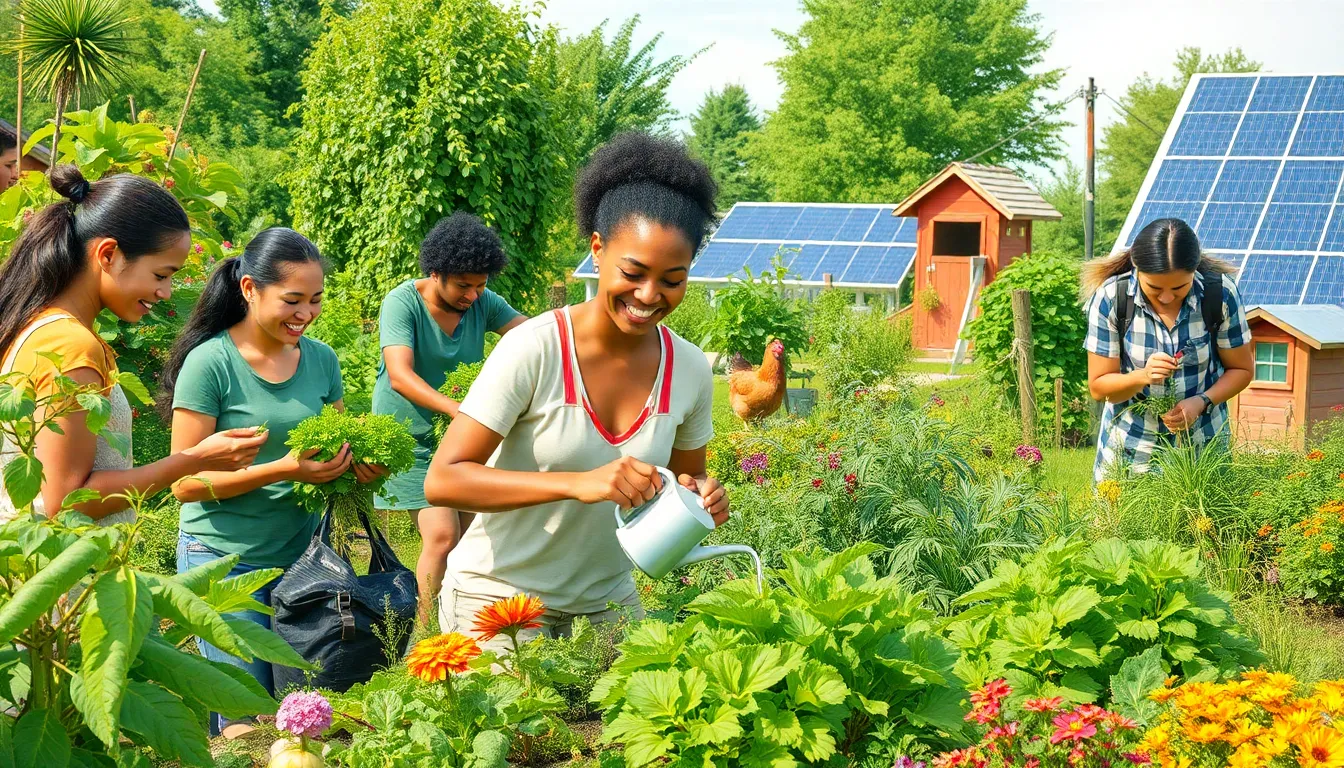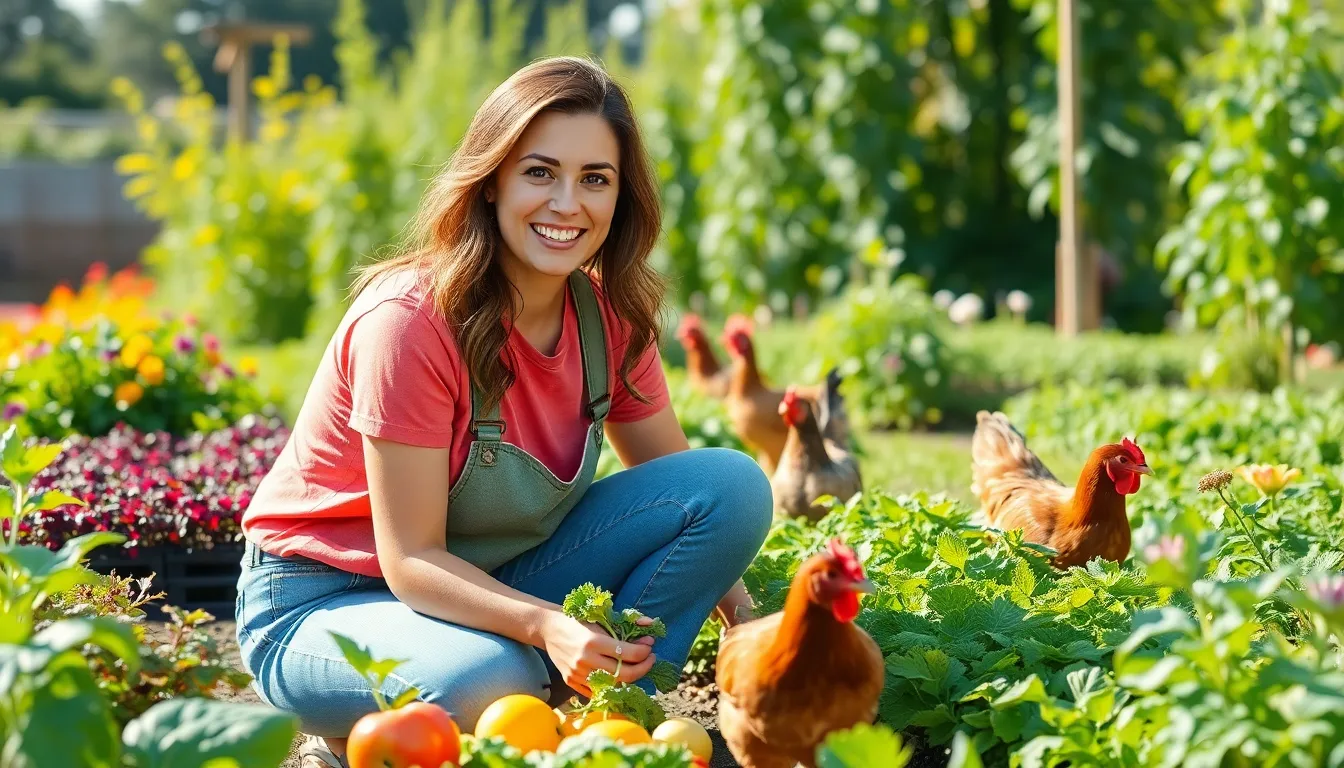Imagine waking up to the sound of birds chirping and the aroma of freshly brewed coffee made from beans you grew yourself. Self-sustainable living isn’t just a trend; it’s a lifestyle that promises not only independence but also a good dose of humor when things go awry. Picture attempting to grow your own vegetables only to discover that your green thumb is more of a green pinky.
What Is Self Sustainable Living?
Self-sustainable living refers to a lifestyle that prioritizes independence from external resources. Individuals who embrace this approach strive to meet their own needs through renewable methods. Growing food, raising livestock, and harnessing energy from natural sources represent key components of this lifestyle.
Many people cultivate their own gardens to produce fruits and vegetables. This practice not only provides fresh produce but also reduces reliance on grocery stores. Raising chickens for eggs or goats for milk further enhances self-sufficiency.
Energy independence plays a crucial role in self-sustainable living. Solar panels and wind turbines serve as common solutions for harnessing renewable energy. By utilizing these technologies, individuals can generate their own electricity and reduce their carbon footprint.
Water conservation is another essential aspect. Rainwater harvesting systems collect and store rain for irrigation and household use. Greywater recycling systems treat and reuse water from sinks and showers, promoting efficient water usage.
Self-sustainable living also encourages minimal reliance on fossil fuels. By opting for public transportation, biking, or walking, individuals can minimize their environmental impact. Furthermore, using energy-efficient appliances contributes to reduced energy consumption.
Community involvement often accompanies self-sustainable living. Neighbors might exchange goods, resources, or knowledge, fostering strong local networks. These connections not only enhance resilience but also create a supportive environment for individuals pursuing sustainability.
Overall, self-sustainable living embodies a commitment to reducing environmental impact and enhancing personal independence. This lifestyle aligns with greater social and ecological responsibility, inspiring others to adopt sustainable practices.
Benefits Of Self Sustainable Living


Self-sustainable living promotes numerous benefits, leading individuals towards a healthier, more independent lifestyle. This approach not only supports personal well-being but also positively impacts the environment and economy.
Environmental Impact
Environmental benefits stem from reduced reliance on non-renewable resources. By growing food organically, individuals decrease pesticide usage and carbon emissions associated with transportation. Utilizing solar panels and wind turbines enables homes to harness clean energy, cutting fossil fuel consumption. Rainwater harvesting practices conserve water, maintaining local ecosystems and decreasing runoff. Engaging in self-sustainable living fosters biodiversity as gardens become habitats for various organisms. These practices collectively lead to lower carbon footprints, improved air quality, and a vibrant, diverse environment.
Economic Advantages
Economic benefits arise through reduced living costs and increased financial independence. Growing food at home eliminates grocery bills, providing savings while enabling consumption of fresh produce. Raising chickens for eggs or bees for honey can yield additional income streams. Utilizing renewable energy sources reduces reliance on expensive utilities, allowing for lower monthly bills. Participating in local barter systems creates shared economic resources and fosters relationships within communities. These financial advantages encourage sustainable choices and stimulate local economies, promoting both personal and communal self-sufficiency.
Key Principles Of Self Sustainable Living
Self-sustainable living emphasizes environmental stewardship and resourcefulness. Adopting its key principles can greatly enhance personal well-being and reduce ecological footprints.
Reducing Waste
Reducing waste involves rethinking consumption habits. Composting organic matter lowers landfill contributions while enriching soil. Reusing materials through upcycling initiatives minimizes the need for new products. Purchasing secondhand items cuts down on production waste. Practicing mindful consumption ensures necessities are prioritized, preventing impulse buys. Furthermore, participating in local exchanges can lead to reduced acquisition of disposable items, fostering a culture of sharing.
Renewable Energy Sources
Renewable energy sources play a vital role in self-sustainable living. Solar panels capture sunlight, providing clean electricity that benefits homes and businesses. Wind turbines harness wind power, offering a reliable energy source in appropriate locations. Geothermal heat pumps utilize the earth’s stable temperature for efficient heating and cooling. Rainwater harvesting systems complement these efforts by providing water for irrigation, reducing dependence on municipal systems. Integrating multiple energy sources boosts resilience against outages while promoting environmental sustainability.
Practical Steps To Achieve Self Sustainable Living
Home gardening serves as a fundamental aspect of self-sustainable living. Growing vegetables and herbs in one’s backyard ensures access to fresh produce. Raised beds make gardening accessible, promoting better soil conditions and pest management. Choosing heirloom seeds can foster biodiversity and resilience in plants. Regular composting enriches soil quality, enhancing growth without chemical fertilizers. Utilizing companion planting increases yield by naturally repelling pests.
Water conservation techniques play a crucial role in self-sufficiency. Rainwater harvesting captures and stores rain for irrigation, reducing dependence on municipal sources. Greywater recycling allows for the reuse of household water, like from sinks and showers, for landscaping. Installing drip irrigation systems directs water to roots, minimizing waste. Choosing drought-resistant plants helps maintain gardens with less water input. Implementing mulch around plants retains moisture, curbing evaporation. These strategies not only preserve water but also contribute to a sustainable lifestyle.
Embracing self-sustainable living offers a fulfilling path toward independence and environmental stewardship. By cultivating gardens and utilizing renewable energy sources, individuals can significantly reduce their reliance on external resources. This lifestyle not only promotes personal well-being but also strengthens local communities through shared knowledge and resources.
As more people adopt these practices, the collective impact on the environment becomes increasingly positive. The journey toward self-sustainability is filled with challenges and rewards, making it a worthwhile endeavor for those seeking a more resilient and eco-friendly way of life. Ultimately, self-sustainable living inspires a deeper connection with nature and fosters a sense of responsibility toward future generations.






